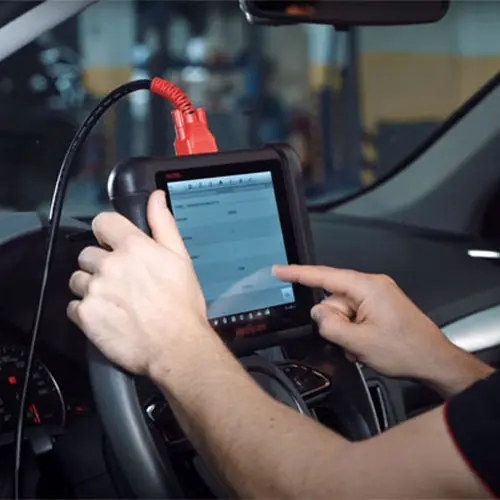Car Ignition Replacement: A Comprehensive Guide
Car ignition systems play an essential role in the general functionality and reliability of vehicles. They are accountable for initiating the combustion process in the engine, guaranteeing the vehicle runs efficiently. However, like all mechanical elements, ignition systems can wear gradually, causing efficiency issues. This article will supply an extensive take a look at car ignition replacement, consisting of indications of failure, replacement steps, and maintenance tips to assist vehicle owners keep their ignition systems in optimum condition.
Understanding the Ignition System
Before delving into the replacement process, it is important to understand the elements of the ignition system. It primarily includes:
| Component | Function |
|---|
| Ignition Coil | Transforms battery voltage into high voltage to produce a trigger. |
| Stimulate Plug | Sparks the air-fuel mix in the engine cylinder. |
| Ignition Switch | Activates the ignition system and permits electrical present flow. |
| Supplier | Disperses high voltage from the ignition coil to the appropriate trigger plug. |
| Ignition Control Module (ICM) | Controls the timing and shooting of the trigger plugs. |
These parts collaborate to ignite the fuel-air mixture in the combustion chamber, allowing engine operation. Gradually, wear and tear can cause ignition system failure, triggering the need for replacement.
Indications of Ignition System Failure
Particular symptoms suggest that the ignition system might require repair or replacement. Vehicle owners need to be mindful to the following signs:
Difficulty Starting the Engine: If the vehicle has a hard time to begin or takes numerous efforts, it may indicate ignition issues.
Misfires: Engine misfiring, defined by a rough idle or sudden loss of power, can show defective trigger plugs or ignition coils.
Electrical Issues: Flickering lights or unpredictable control panel determines might suggest ignition switch problems.
Stalling: Frequent stalling, particularly at low speeds, could come from ignition control module failures.
Reduced Fuel Efficiency: Poor combustion due to ignition failure can cause increased fuel intake.
If vehicle owners experience any of these issues, it is recommended to have the ignition system examined by a qualified mechanic.
Actions for Car Ignition Replacement
Changing the ignition system can be an intricate procedure. The following steps lay out how to carry out a normal ignition replacement. Note that the particular steps might differ based upon the vehicle make and design.
1. Collect Necessary Tools and Parts
Before beginning the replacement, guarantee that you have the essential tools and components:
- Screwdrivers (flathead and Phillips)
- Wrenches and ratchets
- New ignition parts (coil, trigger plugs, distributor, etc)
- Pliers
- Safety safety glasses and gloves
2. Disconnect the Battery
Safety initially! Detach the negative terminal of the battery to prevent electrical shock during the replacement procedure.
3. Remove the Old Ignition Components
Carefully eliminate the parts of the ignition system:
- If replacing stimulate plugs, use a trigger plug socket and cog for elimination.
- For the ignition coil, disconnect any wires before unbolting it.
- If suitable, carefully remove the distributor and any associated parts.
4. Install New Components
Install the brand-new elements in reverse order of removal:
- Begin by placing the brand-new ignition coil in position, making sure all connections are protected.
- Install new stimulate plugs, taking care not to overtighten them.
- If applicable, install the brand-new supplier, aligning it correctly as you reconnect the wiring.
5. Reconnect the Battery
When all components are changed, reconnect the battery. Guarantee the connections are secure, and there are no loose wires.
6. Check the Ignition System
After installation, start the vehicle to check the brand-new ignition system. Listen for smooth operation and check for any warning lights on the control panel. If concerns persist, re-evaluate your setup.
Upkeep Tips for the Ignition System
To extend the life of the ignition system and prevent future concerns, consider the following upkeep suggestions:

- Regular Inspections: Schedule regular assessments of the ignition system throughout car upkeep checks.
- Change Spark Plugs: Follow the producer's guidelines for trigger plug replacement periods.
- Examine Wiring: Inspect circuitry for indications of rust, fraying, or disconnections.
- Keep the Engine Clean: Regularly cleaning the engine bay can avoid dust and debris from collecting around ignition components.
- Use Quality Parts: Always utilize high-quality ignition parts from trustworthy manufacturers to ensure dependability.
Frequently Asked Questions About Car Ignition Replacement
Q1: How typically should I change my ignition system?A1: While there is no particular timeline, regular examinations must be performed every 30,000 miles or as advised by the vehicle producer. Elements like trigger plugs usually require replacement every 30,000 to 100,000 miles, depending upon the type. Q2: Can I replace ignition parts myself?A2: Yes, if you have basicmechanical skills. Nevertheless, for those unknown
with ignition systems, it's recommended to seek professional help to avoid prospective mistakes. Q3: What are the expenses included in ignition replacement?A3: The cost can differ based on the vehicle and parts needed. Parts may vary from ₤ 20 to ₤ 300, while labor expenses in a mechanic's shop can add another ₤ 100 to ₤ 200. Q4: How can I inform if the ignition coil is faulty?A4: Signs of a faulty ignition coil consist of engine misfires, difficulty beginning the vehicle, and bad velocity.
A diagnostic test can likewise determine concerns with the ignition coil. Q5
: Do I require to reset the vehicle's computer system after replacement?A5: Typically, contemporary lorries automatically spot brand-new elements, however sometimes, a reset may be recommended. Consult your vehicle's servicemanual for specific guidelines. The ignition system is an important part
of vehicle operation, and understanding its components and upkeep can assist vehicle owners prevent unnecessary issues and expenses. By recognizing the indications of failure and following the appropriate replacement actions, car owners can ensure their vehicles begin dependably and perform at their best. Routine upkeep and care can extend the life of ignition elements, supplying peace of mind for motorists on the roadway.